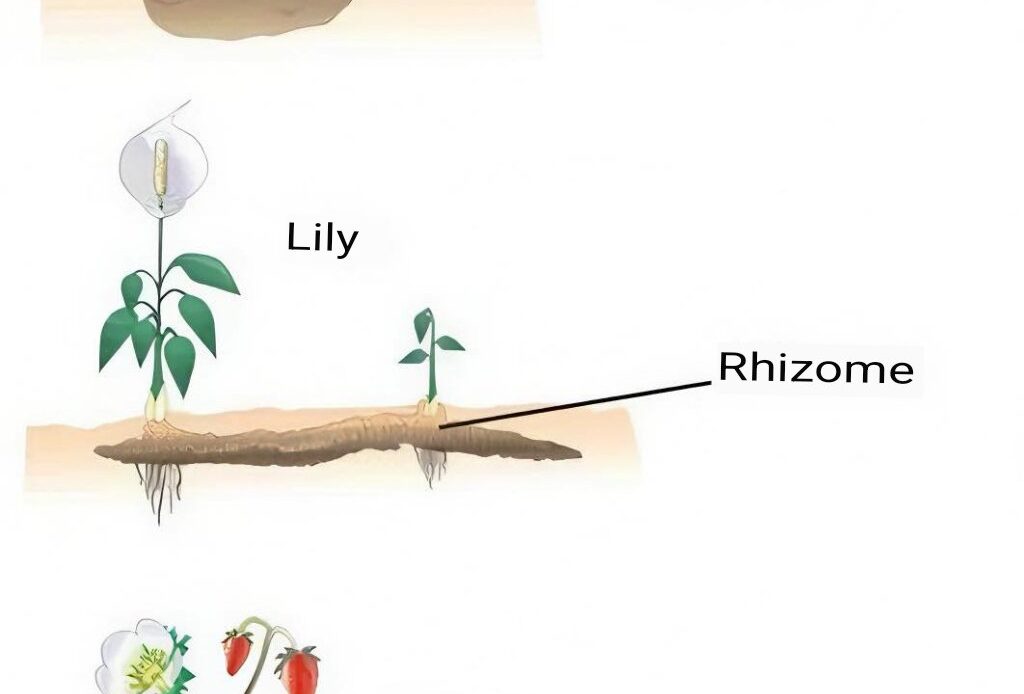Plants, much like animals, have developed fascinating ways to reproduce and ensure their survival. While we are all familiar with the traditional methods of plant reproduction—like flowering and seed production—there are also alternative, often less obvious, ways plants can reproduce without seeds. These methods, known as **vegetative reproduction**, allow plants to propagate asexually, making copies of themselves without the need for fertilization. In this comprehensive guide, we’ll dive into the hidden world of vegetative reproduction, focusing on three key mechanisms: **tubers**, **rhizomes**, and **stolons**.
These reproductive methods are not only essential for plant survival in the wild but are also commonly used in agriculture and gardening. Understanding how these methods work can help gardeners and farmers efficiently propagate plants and grow a thriving garden or farm.
### What is Vegetative Reproduction?
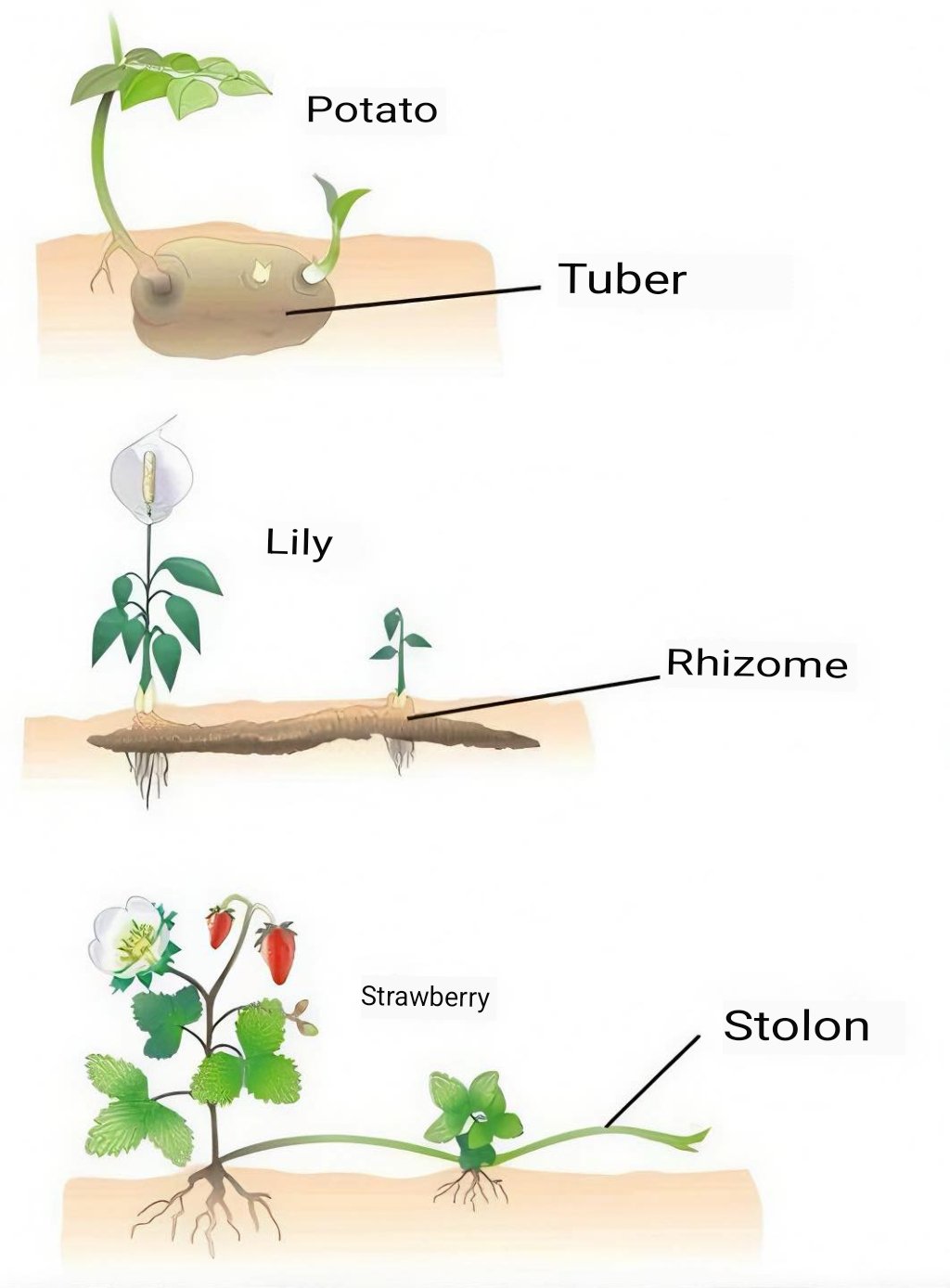
Vegetative reproduction is an asexual process where new plants are produced from parts of the parent plant, such as roots, stems, or leaves, rather than through seeds. This method of reproduction allows plants to quickly and efficiently produce offspring that are genetically identical to the parent. As a result, vegetative reproduction plays a crucial role in helping plants survive and spread, especially in environments where sexual reproduction through seeds may not be reliable or possible.
There are several types of vegetative reproduction, but the most common are **tubers**, **rhizomes**, and **stolons**. Each of these structures has its own unique method of multiplying plants, and understanding their differences can help you better appreciate how plants thrive without seeds.
### Tubers: The Underground Reservoirs of Plant Life
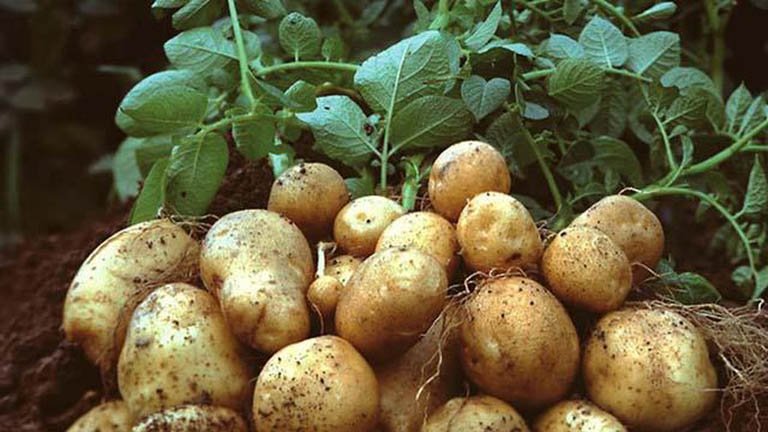
A **tuber** is an underground storage organ that acts as both a nutrient reserve and a means of vegetative reproduction. Tubers are thickened, swollen parts of a stem or root that store food for the plant. These food reserves are essential for survival during unfavorable conditions, such as winter or drought. However, they also serve as a method of asexual reproduction, allowing plants to generate new individuals.
One of the most well-known examples of a plant that reproduces through tubers is the **potato**. Potatoes grow as tubers that develop at the base of the plant’s stem. These tubers contain “eyes” (small buds) that can sprout into new shoots. When a potato is planted in the ground, these buds can grow into new potato plants. This process is an excellent example of how a plant can reproduce efficiently without needing seeds.
#### How Do Tubers Reproduce?
Tubers reproduce by **vegetative propagation**, which means the tuber produces shoots from the stored buds that grow into new plants. These shoots develop into new stems, leaves, and roots, creating an entirely new plant. The process is relatively simple: when conditions are right (usually when the tuber is planted in moist, nutrient-rich soil), the buds sprout and grow into a new plant.
The potato is a great example of how vegetative reproduction can be harnessed for agriculture. Farmers often cut potatoes into pieces, making sure each piece contains at least one “eye.” These pieces are then planted in the soil, where they will sprout and grow into new plants. This method is quicker than growing potatoes from seeds and produces genetically identical plants.
#### Other Plants That Use Tubers
Other plants that use tubers for reproduction include **yams**, **sweet potatoes**, and **Jerusalem artichokes**. While these plants may differ slightly in how their tubers form and grow, they all share the characteristic of using underground storage organs to propagate and ensure the plant’s survival. This method is ideal for plants that need to survive tough conditions, like winter or dry seasons, since the tuber remains dormant until the right conditions for growth appear.
### Rhizomes: The Underground Stems That Spread
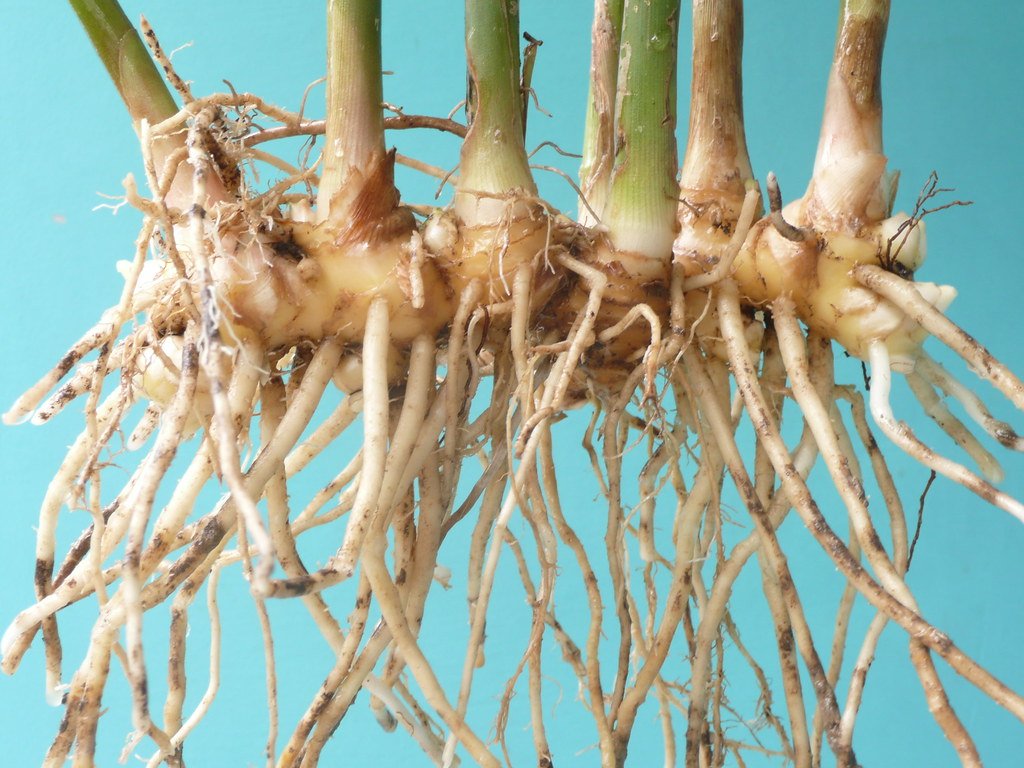
A **rhizome** is a horizontal, underground stem that grows along the soil surface or just below it. Rhizomes function as a plant’s method of vegetative reproduction by producing new shoots or roots at various points along their length. This allows the plant to spread and colonize new areas, ensuring that it can adapt and thrive in a variety of environments.
One common example of a plant that uses rhizomes for reproduction is the **lily**. Lilies produce rhizomes that grow horizontally beneath the soil surface. These rhizomes give rise to new plant shoots that eventually emerge from the soil as individual lilies. Rhizomes can also store food, helping the plant survive harsh conditions, such as during winter or periods of drought.
#### How Do Rhizomes Reproduce?
Rhizomes reproduce in a similar way to tubers, by sprouting new shoots and roots along their length. These shoots can emerge from the rhizome and grow into new, independent plants. The process works like this: as the rhizome grows horizontally, it sends out shoots at intervals. Each shoot that emerges from the soil can grow into a full plant with roots, stems, and leaves.
Rhizomes are especially useful for plants that need to spread quickly, such as **ginger**, **bamboo**, and **canna lilies**. In fact, many plants that are considered invasive species—like **kudzu** and **Japanese knotweed**—use rhizomes to spread rapidly and take over large areas.
#### Other Plants That Use Rhizomes
Aside from lilies, other plants that use rhizomes include **ferns**, **ginger**, and **mint**. In fact, mint is notorious for spreading uncontrollably in gardens due to its vigorous rhizome growth. This rapid spread can be both a blessing and a curse, depending on whether you’re trying to cultivate the plant or keep it contained.
### Stolons: The Creeping Stems That Grow Along the Ground
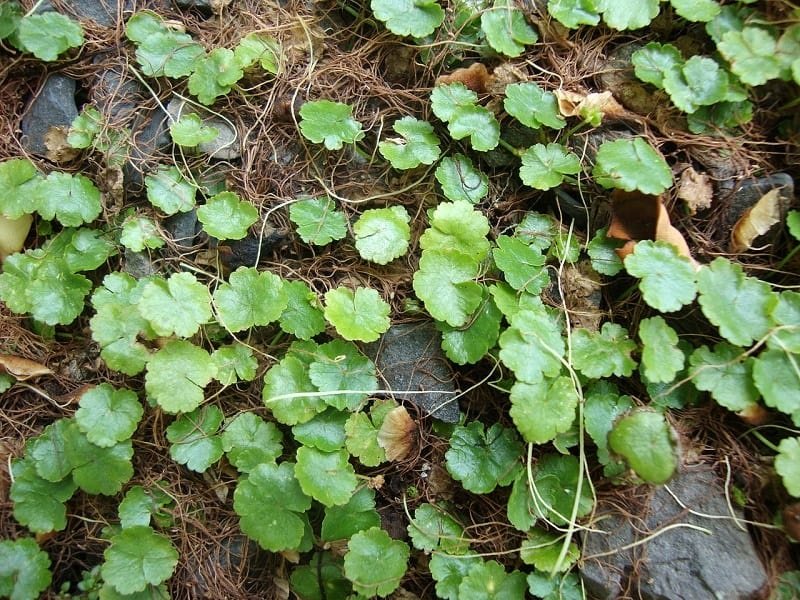
A **stolon**, often referred to as a “runner,” is a horizontal stem that grows along or just above the soil surface. Stolons allow a plant to produce new individuals by sending out shoots at various intervals along the stem. These shoots take root at certain points, developing into independent plants.
One of the most famous examples of plants that use stolons for reproduction is the **strawberry**. Strawberry plants produce stolons, or runners, that stretch out and produce new plants at the tips. These new plants can establish roots in the soil and grow into full strawberry plants, ensuring that the original plant’s genetic material continues to spread.
#### How Do Stolons Reproduce?
Stolons reproduce by growing along the surface of the soil, sending out new shoots at different points along the stem. These new shoots grow roots and form independent plants. The original plant can then “colonize” a large area, ensuring that its genetic material is passed on.
Strawberries are a great example of how stolons are used in gardening and agriculture. Farmers often propagate strawberry plants by allowing the runners to take root, which results in a patch of new strawberry plants ready for harvest.
#### Other Plants That Use Stolons
Aside from strawberries, other plants that reproduce through stolons include **spider plants**, **creeping thyme**, and **grasses**. These plants rely on stolons to quickly spread across a garden or field. Stolons are also useful for plants that require constant ground cover, such as **clover** and **grass** species.
### Benefits of Vegetative Reproduction
Vegetative reproduction offers several advantages for plants, especially in environments where seed-based reproduction may not be as effective. The main benefits of vegetative reproduction include:
1. **Speed of Reproduction**: Vegetative reproduction is often faster than sexual reproduction through seeds, allowing plants to rapidly colonize an area.
2. **Genetic Uniformity**: The offspring produced through vegetative reproduction are genetically identical to the parent plant, which can be desirable in agriculture when uniformity is needed.
3. **Survival in Harsh Conditions**: Tubers, rhizomes, and stolons allow plants to survive periods of drought, extreme temperatures, or other challenging conditions. These structures store nutrients and energy, enabling the plant to endure until favorable conditions return.
### Conclusion
Vegetative reproduction is an essential method for many plants to propagate and survive. By using **tubers**, **rhizomes**, and **stolons**, plants can multiply without relying on seeds, allowing them to thrive in a variety of conditions. These reproductive mechanisms also provide a valuable tool for gardeners and farmers, offering an efficient and controlled way to propagate plants and ensure a consistent supply of crops.
By understanding how these mechanisms work, you can apply this knowledge to your own gardening or farming practices, ensuring that your plants grow and flourish year after year. Whether you’re growing potatoes, strawberries, or lilies, vegetative reproduction is a natural process that plays a significant role in sustaining plant life.
With the ability to reproduce quickly and effectively, these plants are perfect examples of nature’s ingenuity. So, the next time you’re in your garden or working with crops, take a moment to appreciate the power of vegetative reproduction and the remarkable ways plants continue to thrive.
